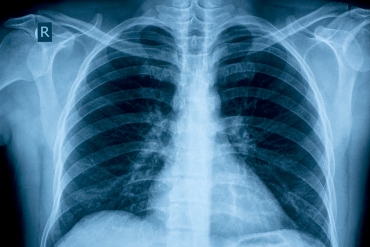Air Pollutants Found to Potentially Impact Lungs, Heart and Immune System
November 26, 2018 - By Robin Marks - As the deadly wildfires that devastated Northern California come under control and residents begin the process of rebuilding, one question that lingers is what are the longer-term health effects of breathing the smoky air.
For most healthy adults, the short answer is that there likely are none. Many of the reparatory impacts of smoke inhalation, even in severe cases, are temporary, said John Balmes, MD, a UC San Francisco pulmonologist and an expert on the respiratory and cardiovascular effects of air pollutants.
However, the answer isn’t universal. Young children, the elderly and others who may be frailer because of health conditions could be more affected by the smoke. And while there are many studies on the health impact of air pollution, there’s been less research on how acute exposure can affect a population.
What Was in the Smoke
Heavy winds during the blazes carried particulate matter across the Bay Area, and the scent of campfire was an indicator that most of the smoke came from burning wood, Balmes said.
 Most worrisome are so-called PM2.5 particles, tiny particulate matter small enough to lodge deep in the lung. These hydrocarbon particles chemically injure the lung tissue, causing inflammation.
Most worrisome are so-called PM2.5 particles, tiny particulate matter small enough to lodge deep in the lung. These hydrocarbon particles chemically injure the lung tissue, causing inflammation.
Though the majority of the smoke was from wood and grass burning, the fires also burned through neighborhoods and other areas with buildings, adding particles from cars, furniture and other goods.
Those toxic particles were likely to be diluted considerably as the smoke traveled through cleaner air on its journey throughout the Bay Area, Balmes said, but just what particles were released from the manmade materials remains unclear. Atmospheric chemists from UC Berkeley, where Balmes is also a professor of environmental science, confirmed that the particles were mostly from burning wood. Still, he said, the smoke plume contained various toxic agents, which would be expected from the combustion of any carbon-based fuel.
Impacts Beyond the Lungs
With a vast majority of the Bay Area affected by the smoke, it was difficult to avoid inhaling some particles. For people who may be concerned about their respiratory system, the good news is that the lungs of most healthy adults can recover fully from smoke damage, even in severe cases, according to Balmes. “It’s similar to recovering from a severe bout of pneumonia,” he said.
Of course, groups that are more vulnerable to long-term effects of pneumonia are also more likely to be affected by smoke: young children, the elderly and people with pre-existing respiratory conditions.
Smoke inhalation can exacerbate asthma and chronic obstructive pulmonary disease (COPD), though the effects may not be permanent. In some cases, extreme smoke inhalation can cause asthma that is triggered by future exposures to smoke.
While most people in vulnerable groups will recover once the fires are out, Balmes suggests that people continuing to experience wheezing, cough, or shortness of breath see a health care provider.
During the crisis, public health officials urged people to stay indoors and avoid bringing in any air from the outside. N95 respirators, which filter out PM2.5, were widely recommended – and used in hospitals – for those whose health was more vulnerable.
 Surprisingly, the greatest risk factor with inhaling the smoky air isn’t respiratory, but cardiovascular.
Surprisingly, the greatest risk factor with inhaling the smoky air isn’t respiratory, but cardiovascular.
“The American Heart Association recognizes outdoor particles as an effector for short- and long-term health effects,” Balmes said.
The risk is three-fold: Inflammation in the lungs can become systemic, affecting the whole body’s vascular function; the risk for blood clots increases, which can lead to heart attack or stroke; and the autonomic nervous system is stimulated, which can cause heart arrhythmia. In addition, Balmes said, “There’s good evidence that these effects can accelerate atherosclerosis, the plaques that build up inside blood vessels.”
The cardiovascular impacts, however, appear to be temporary, and these effects usually subside after the smoke does, Balmes said. The largest risk from the fire is likely to have passed since acute exposure to smoke in the moment could lead to arrhythmia or a heart attack, which can have long-lasting consequences.
Public health officials continue to urge caution during the fire cleanup. Ash from burned homes and other items will likely contain metals, chemicals, and potentially asbestos, which may be considered toxic if breathed in or touched with wet skin. They recommend wearing N95 respirators, gloves, long sleeves and long pants; using water for cleanup rather than dry-sweeping to keep ash out of the air; and keeping children and those vulnerable to health issues away from the ash.
The Need for More Research
The hardest part for doctors and researchers is understanding how much acute exposure to wildland fire smoke could lead to longer-term health problems.
Studies on long-term exposure to air pollutants have shown an impact on the immune system. In a study Balmes conducted on children, he found that some kids chronically exposed to certain air pollutants that are also found in smoke can develop new allergies or chronic asthma. However, those cases would have involved chronic exposure over months rather than days.
Balmes said he doesn’t think anyone has been able to study over time the effects of acute smoke exposure.
“I think there’s great interest in doing that,” he said. “But fires are unpredictable in terms of their timing. Unless someone has a cohort assembled for some other reason, it’s hard to pull together enough folks to study properly on a longitudinal basis.”
While tragic, the fires in the North Bay present an opportunity for researchers to learn more about the long-term effects of exposure to smoke. “Particularly for cardiovascular outcomes,” Balmes said. “There’s lots of room for more research.”
Source: UC San Francisco









